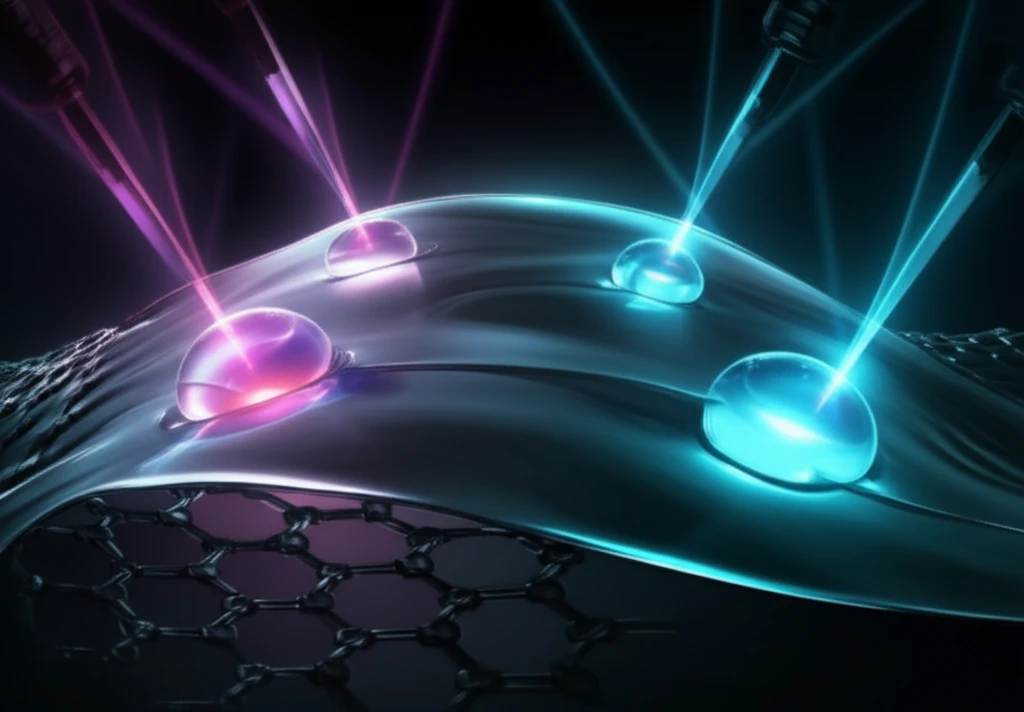
Wave Goodbye to Messy Labs: Graphene Films Enable On-Demand Droplet Control
"Scientists develop a light-activated graphene film that manipulates liquid droplets with unprecedented precision, paving the way for advanced lab-on-a-chip devices and diagnostics."
In countless industries, from drug discovery to materials science, the ability to precisely control fluids at a small scale is increasingly valuable. Traditional methods can be cumbersome and lack the fine-tuned control needed for many modern applications. Scientists are constantly seeking innovative ways to manipulate liquids with greater accuracy and efficiency.
Enter the slippery liquid-infused porous surface (SLIPS), a groundbreaking technology inspired by nature. SLIPS offers superior liquid repellency compared to conventional surfaces. However, existing SLIPS technologies often rely on contact-based control methods, limiting their ability to provide spatial and temporal precision.
Now, researchers have unveiled a novel solution: a paraffin-infused porous graphene film (PIPGF) that uses light to achieve programmable wettability. This innovative material combines graphene's unique photothermal properties with the tunability of a paraffin-infused surface, enabling unprecedented control over droplet movement and positioning. This article explores the exciting potential of this new technology, from streamlining lab processes to creating advanced diagnostic tools.
How Does Light-Activated Droplet Control Work?

The secret lies in graphene's ability to efficiently convert light into heat. When the PIPGF is exposed to near-infrared (NIR) light, the graphene absorbs the light energy and heats up the paraffin infused within its pores. This causes the paraffin to transition between a solid and liquid state.
- Remote Control: No physical contact is required to manipulate the droplets.
- High Precision: NIR masks can be used to create intricate patterns of wettability, guiding droplets along desired paths.
- Reversibility: The paraffin transitions quickly and repeatedly between solid and liquid states, allowing for dynamic control.
- Stability: The system maintains its performance over multiple cycles of heating and cooling.
The Future is Bright for Light-Controlled Microfluidics
The development of this light-activated graphene film represents a significant step forward in microfluidics and droplet manipulation. The ability to remotely control liquid movement with such precision has the potential to revolutionize a wide range of applications.
Imagine a future where diagnostic tests can be performed quickly and efficiently on a single chip, or where drug discovery is accelerated through automated high-throughput screening. This technology brings these possibilities closer to reality by simplifying liquid handling in microplates and enabling the creation of sophisticated microreactors.
As researchers continue to refine and expand upon this technology, we can expect to see even more innovative applications emerge, transforming fields from medicine and biology to materials science and environmental monitoring. The future of microfluidics is indeed looking brighter, thanks to the power of light-controlled graphene films.
